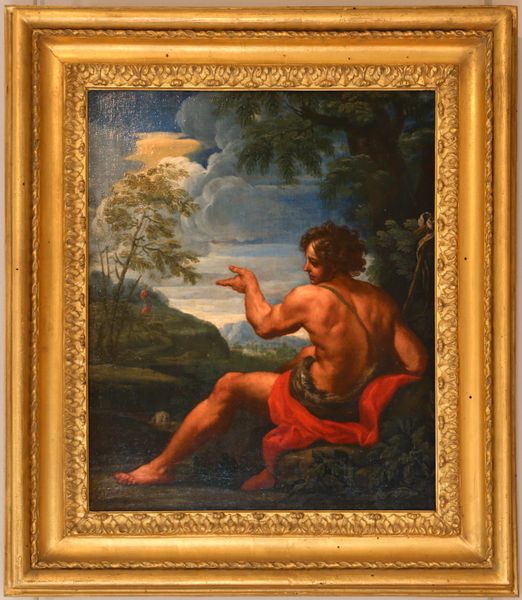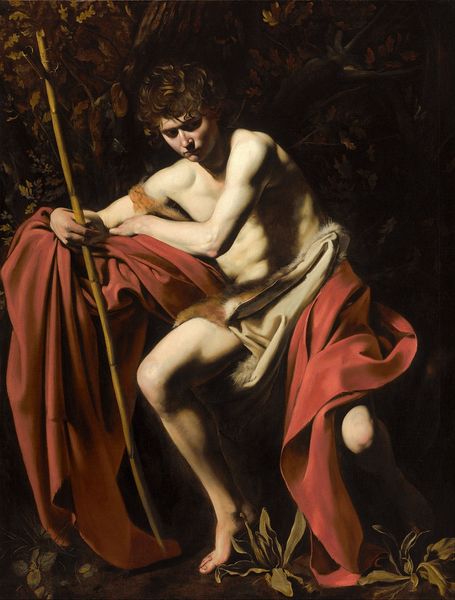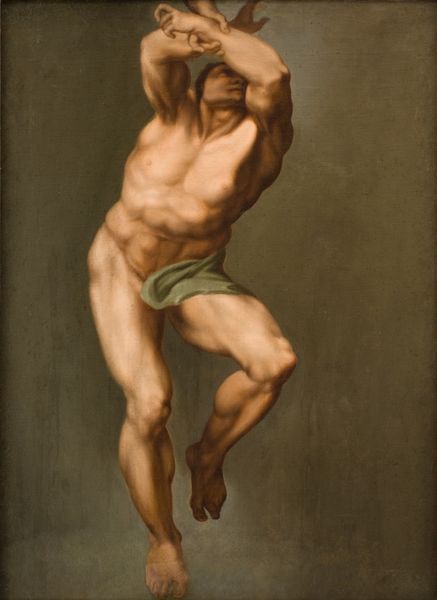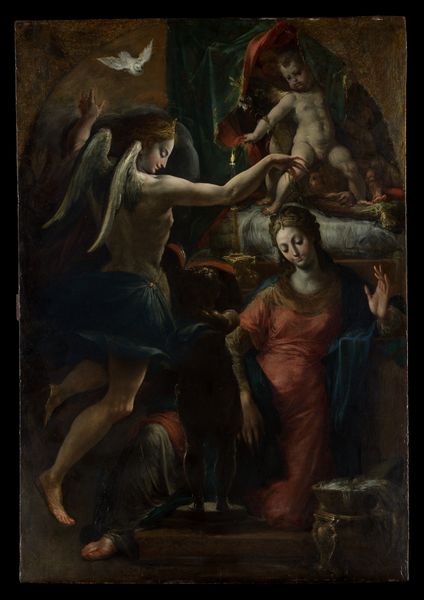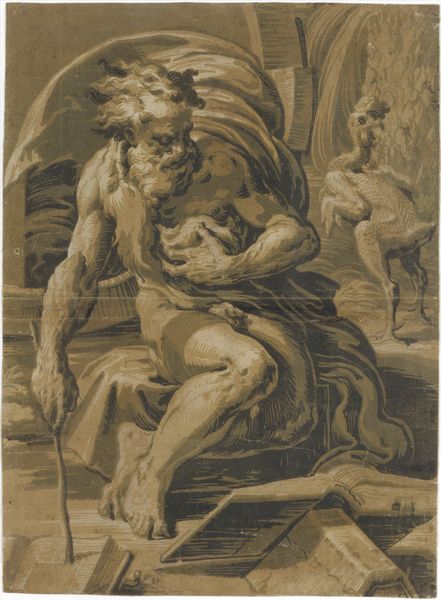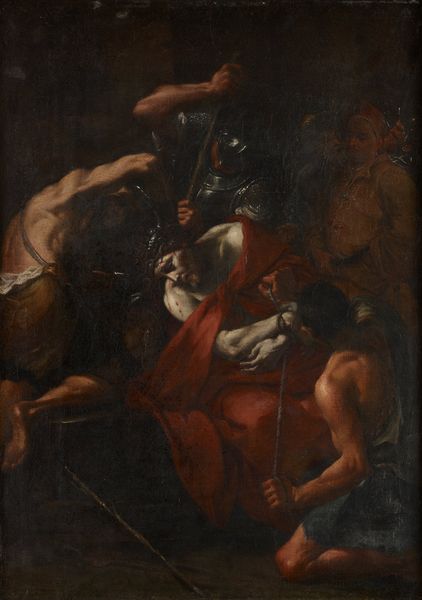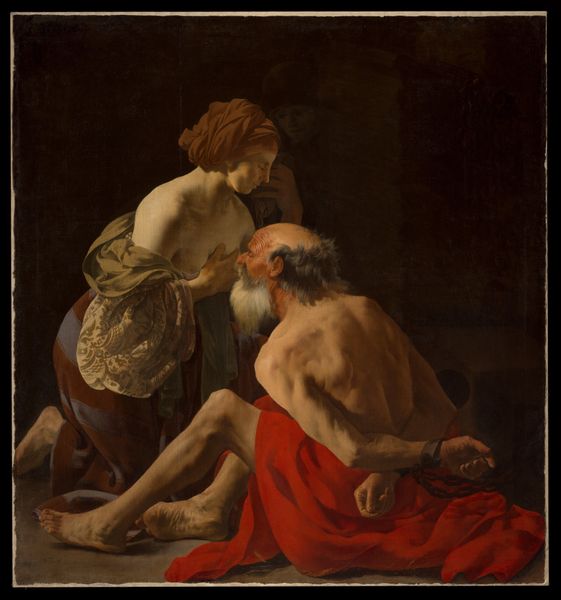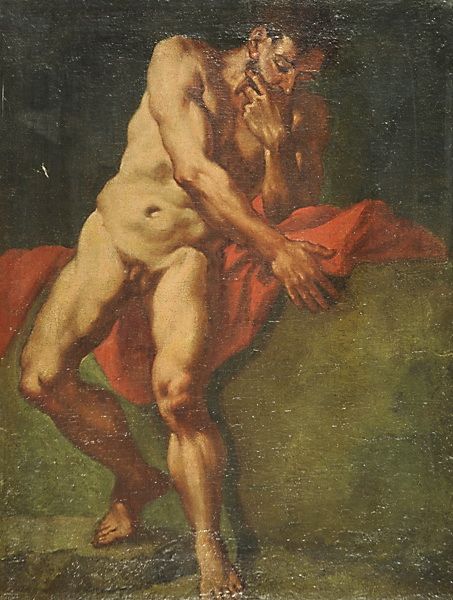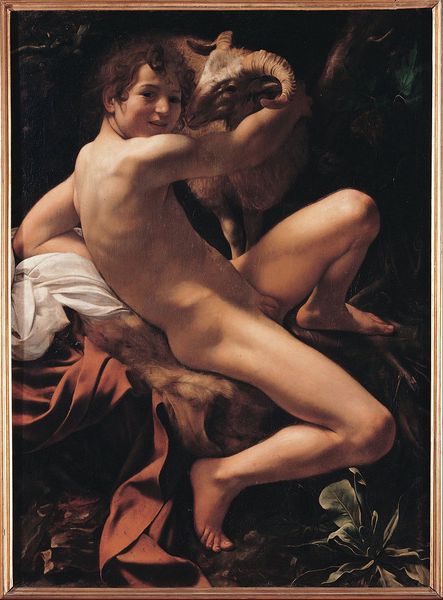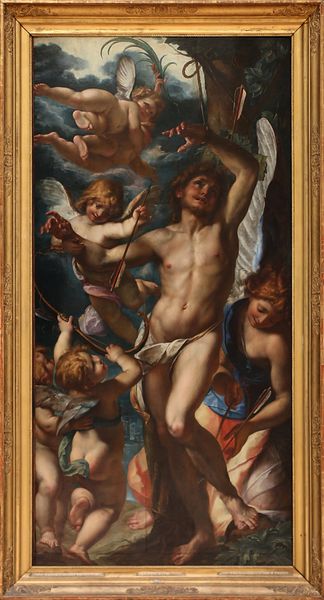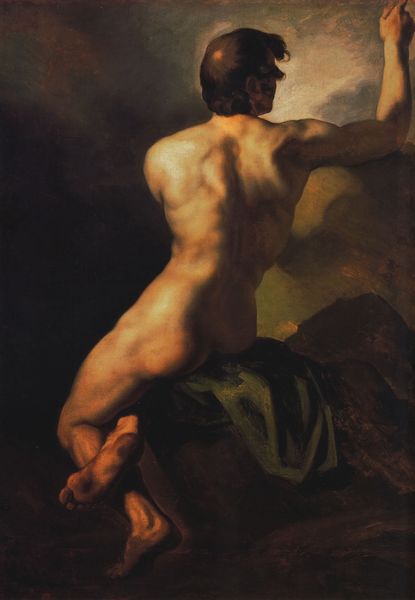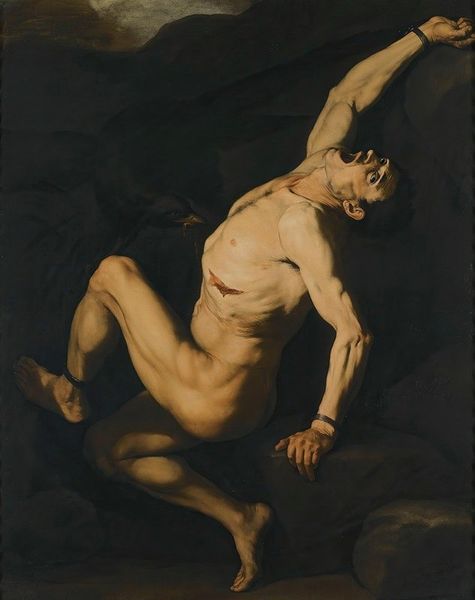
oil-on-canvas
#
stone
#
sculpture
#
sculptural image
#
dark-toned
#
unrealistic statue
#
sculpting
#
veil as a decoration
#
carved
#
italy
#
oil-on-canvas
#
black face
#
statue
Dimensions: 16 x 11 9/16 in. (40.64 x 29.37 cm) (sight)22 3/4 x 18 1/8 in. (57.79 x 46.04 cm) (outer frame)
Copyright: Public Domain
This painting, "St. Jerome in the Desert," date unknown, is made with oil on canvas by an anonymous artist. The painting is dominated by a somber palette where the figure of Saint Jerome emerges from the darkness, his body illuminated. Notice the composition: the saint is positioned low, almost mirroring the skull he contemplates. A striking interplay of light and shadow accentuates the musculature of Jerome, contrasting sharply with the smooth surface of the skull. The red drapery adds a sense of dynamism to the composition and may be seen as a signifier of sacrifice and penance. The artist employs a structural framework that juxtaposes flesh with bone, mortality with spirituality. The dark background suggests a desert cave, a symbol perhaps of isolation and introspection. The use of chiaroscuro invites us to consider not just what is depicted but how it is represented, urging us to confront questions of existence. Ultimately, the painting functions as an arena where ideas about faith, suffering, and the human condition intersect.
Comments
minneapolisinstituteofart almost 2 years ago
⋮
The composition of this St. Jerome by an unknown Italian artist derives ultimately from a famous engraving of 1602 by Agostino Carracci (1557-1602). Although the overall spirit of the work is Bolognese and reminiscent of Ludovico Carracci (1555-1619), the loose handling, especially in the saint's head, indicates a date of execution in the late 17th century or early 18th century. This scene depicts St. Jerome in a secluded Syrian Desert cave to which he withdrew around 378. During the years he spent in the desert, he studied Hebrew, which he later used when translating the Old and New Testaments into Latin. St. Jerome holds a crucifix in one hand while the other rests on a skull; attributes that served as reminders: the crucifix represents his devotion to Christ while the skull acts as a memento mori, a reminder of death, and the vanity of earthly pursuits.
Join the conversation
Join millions of artists and users on Artera today and experience the ultimate creative platform.
